Wild cats have always fascinated us with their mix of elegance, strength, and sheer survival instinct. They’re apex predators that define what it means to rule the wild—commanding respect, fear, and awe in equal measure. From lightning-fast sprinters to mountain-climbing phantoms, these cats are nature’s most efficient hunters. Below are 15 of the deadliest wild cats in the world, each with a lethal pounce that proves their dominance.
1. Amur Leopard
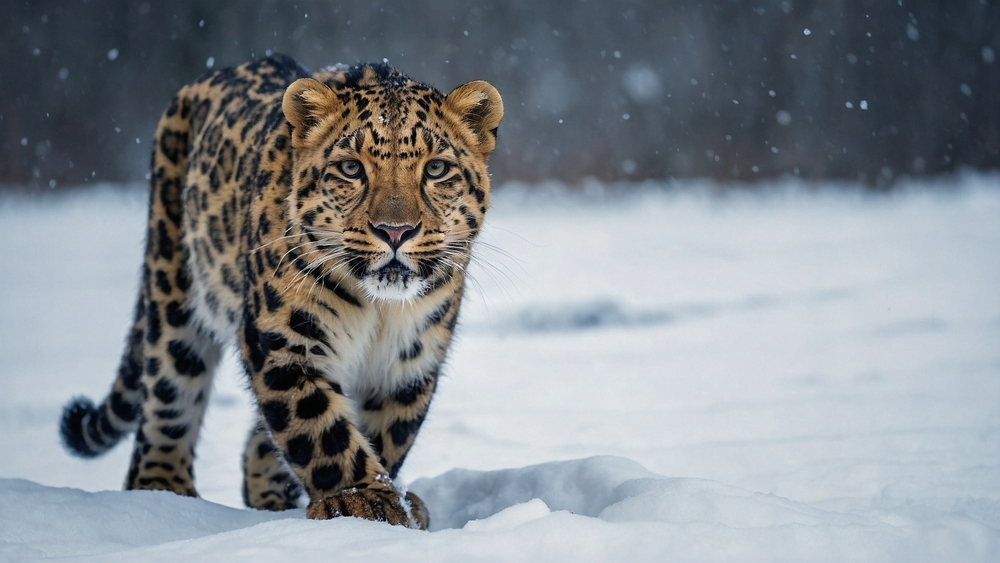
The Amur leopard is one of the rarest big cats in the world, with fewer than 150 believed to exist in the wild. Living in the forests of Russia and northeastern China, it combines speed, stealth, and power to catch prey. Its golden coat and long legs make it both striking and efficient in snowy terrain. Each pounce is a lethal blend of grace and strength.
Conservation groups like WWF highlight the Amur leopard as critically endangered, but also as a symbol of hope for big cat survival. Their survival depends on careful habitat protection and anti-poaching measures. Despite their low numbers, they remain highly effective predators within their territory. The Amur leopard’s deadly elegance proves that even fragile populations can hold immense power.
2. African Lion
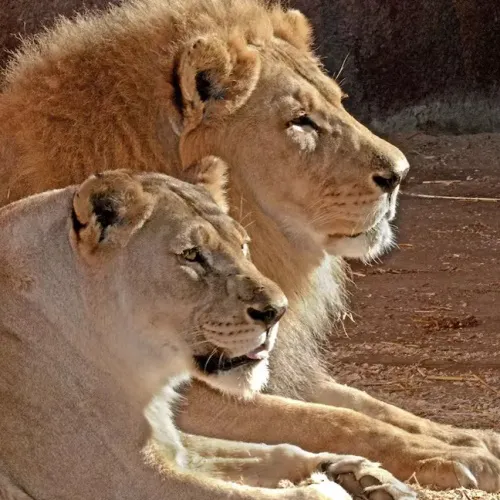
The African lion has earned its title as the king of the jungle, reigning over the savannah with unmatched strength. Male lions can weigh up to 500 pounds and possess a bone-crushing bite that secures their spot as top predators. While prides often hunt together, a lone lion is still capable of striking fear into the animal kingdom. Their coordinated strategies make them formidable hunters that can overwhelm nearly any prey.
Lions are unique among big cats because of their social structure, living and hunting in large prides. This cooperative lifestyle increases their success rate, allowing them to target prey as massive as buffalo and giraffes. Their loud roars can be heard miles away, serving as both a warning and a declaration of dominance. The lion’s lethal pounce is a reminder of its unrivaled presence on the plains of Africa.
3. Leopard
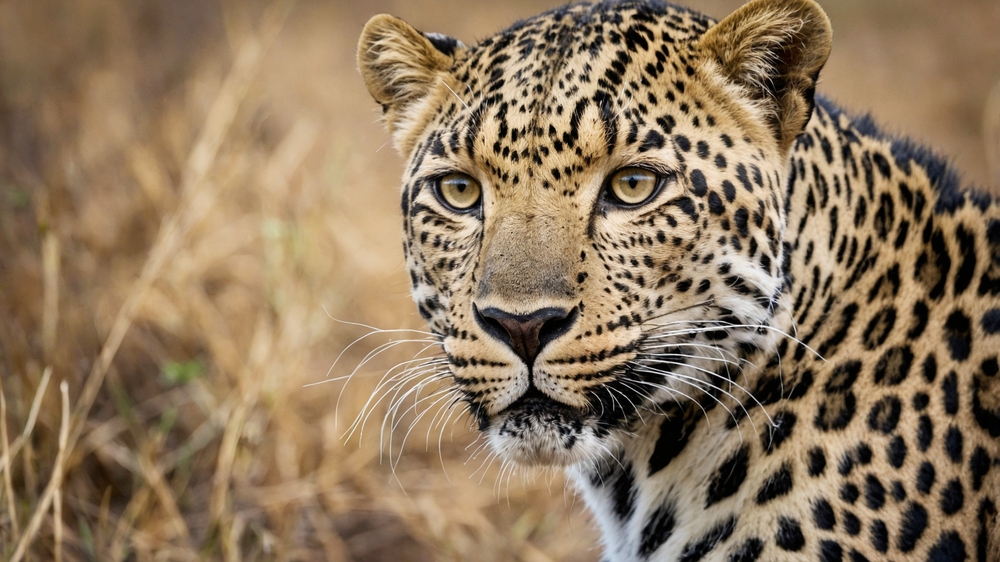
The leopard is the ultimate master of stealth, striking silently and retreating quickly with its kill. Known for dragging prey heavier than its own body weight up into trees, it prevents scavengers from stealing its meal. This adaptability makes it one of the most efficient killers in the wild. Found across Africa and Asia, leopards thrive in habitats ranging from forests to deserts.
According to the International Union for Conservation of Nature (IUCN), leopards are classified as “vulnerable,” largely due to human activity encroaching on their territory. Their solitary and secretive behavior makes them hard to study, but it also keeps them effective as ambush predators. Their muscular build and astonishing leaps enable them to take down prey with surgical precision. Despite their beauty, leopards remain one of the most feared hunters in the wild.
4. Snow Leopard
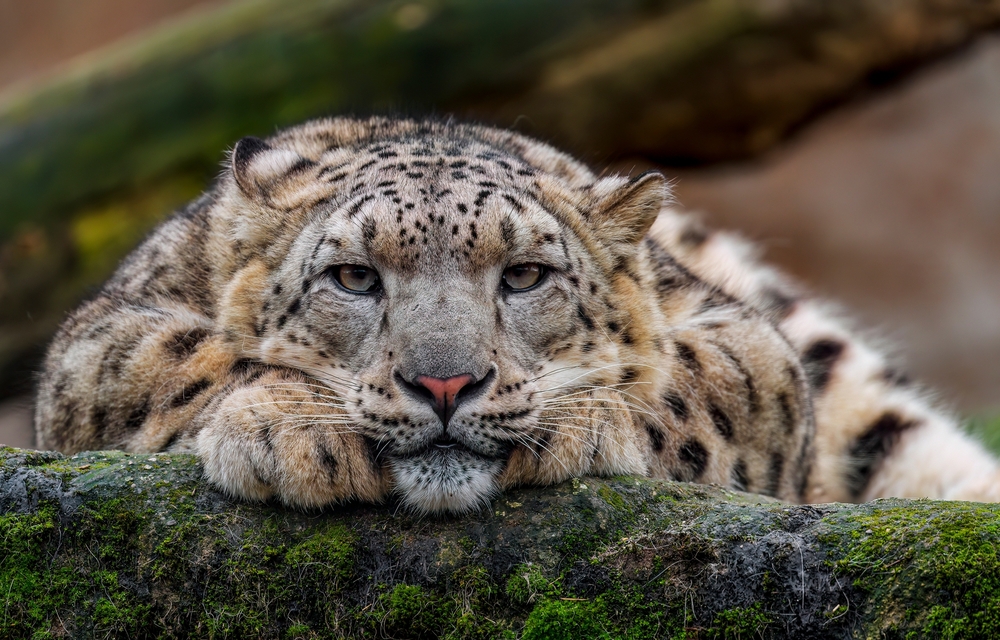
Snow leopards are elusive hunters that thrive in the world’s harshest environments. Living at altitudes above 15,000 feet, they use incredible leg strength to pounce across steep, rocky terrain. Their long tails help with balance, making each leap controlled yet deadly. With the ability to spring up to 50 feet in a single bound, their hunting skills are unmatched in their high-altitude domain.
Despite their mythical reputation, snow leopards are endangered, with only an estimated 4,000–6,000 left in the wild. Their solitary nature makes them hard to spot, but their ghost-like presence has captivated mountain cultures for centuries. They prey on animals like ibex and blue sheep, demonstrating their dominance in rugged ecosystems. Every pounce from a snow leopard is a breathtaking reminder of nature’s extremes.
5. Cheetah
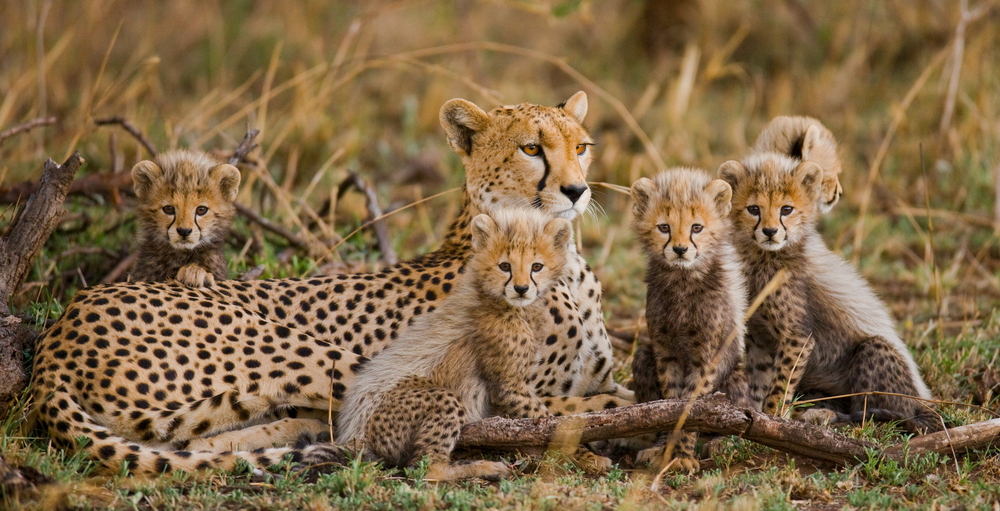
The cheetah is built for speed rather than brute strength, but that speed is a lethal weapon on the savannah. Capable of accelerating faster than a sports car, it can reach speeds up to 70 mph in seconds. Once close enough, it uses a suffocating bite to end the chase quickly. Its hunting style is a blend of precision, agility, and efficiency.
A National Geographic study on cheetahs shows that their success rate in hunts is around 40–50%, significantly higher than lions. This efficiency makes them one of nature’s deadliest predators, even if they lack the size of other big cats. Their aerodynamic bodies and oversized nasal passages allow maximum oxygen intake during sprints. Watching a cheetah hunt is witnessing pure evolutionary perfection in motion.
6. Jaguar
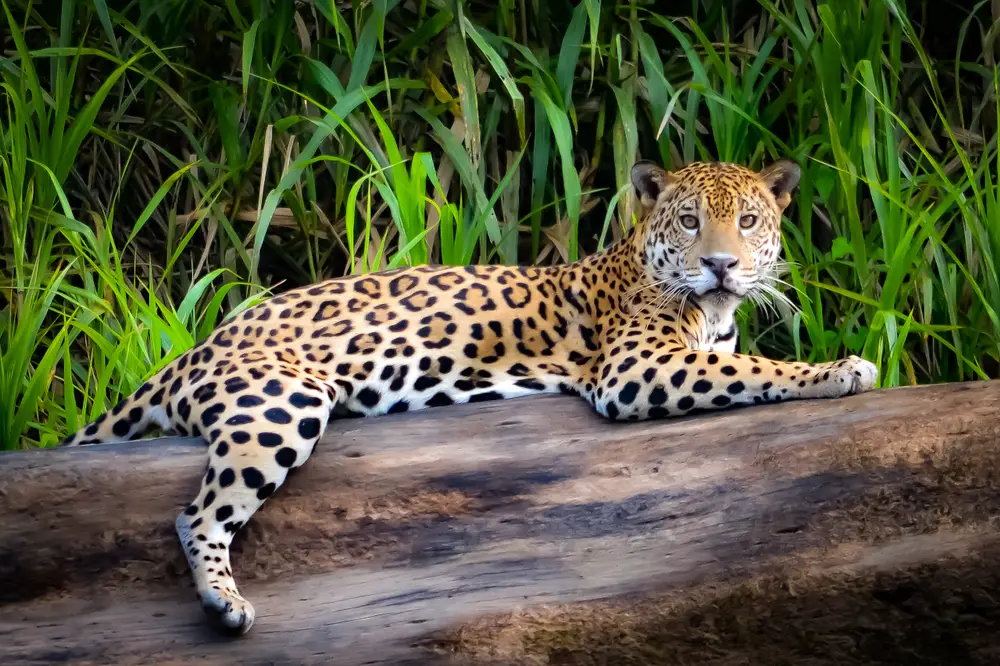
The jaguar is a powerhouse of strength and stealth, stalking its prey through the dense jungles of Central and South America. Unlike most cats, it is an exceptional swimmer, often hunting in rivers as well as on land. Its jaws are so powerful they can crush turtle shells with ease. This lethal bite ensures that few animals can escape once targeted.
Jaguars rely heavily on ambush tactics, waiting silently before striking with devastating force. Their solitary nature and elusive behavior make them one of the hardest cats to study. With a build more stocky than leopards, their explosive power is second to none. They are equally comfortable hunting deer in the forest or caimans along riverbanks, proving their dominance in every terrain.
7. Puma
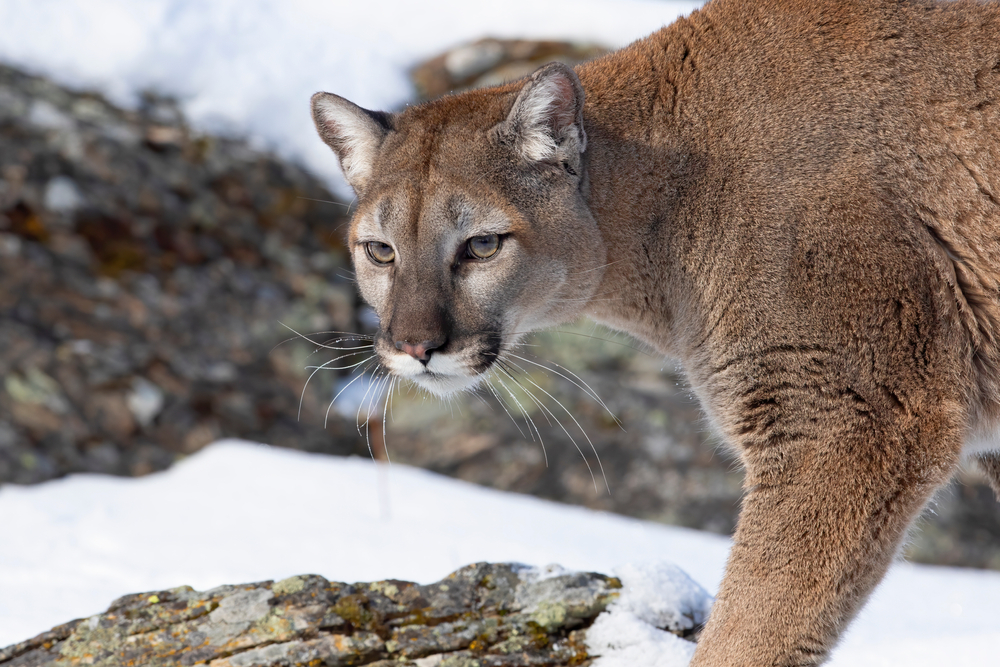
Also known as cougars or mountain lions, pumas are solitary hunters that thrive across the Americas. Their muscular bodies and long limbs allow them to leap up to 40 feet in a single bound. Pumas ambush prey with explosive power, delivering a killing bite to the neck. Their stealth and adaptability have earned them a wide range across mountains, forests, and deserts.
According to a report from the Journal of Wildlife Management, pumas play a critical role in regulating deer populations in North America. This makes them not only skilled hunters but also key to maintaining ecological balance. Their elusive nature has helped them survive despite human expansion. Each pounce from a puma is a demonstration of precision, power, and survival instinct.
8. Siberian Tiger
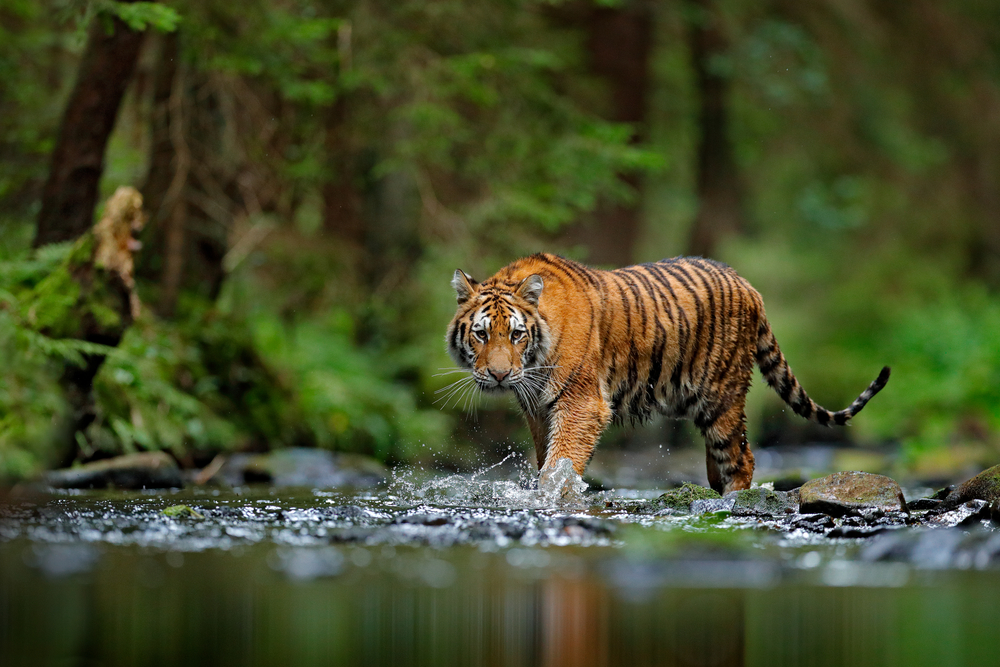
The Siberian tiger, also known as the Amur tiger, is the largest of all tiger subspecies. Males can weigh more than 600 pounds, making them true giants among cats. These predators live in the cold forests of Russia, where their thick coats keep them insulated. Their immense strength and powerful pounce allow them to bring down elk and wild boar with ease.
Unlike other tigers, Siberian tigers rely on endurance as much as stealth, stalking prey over long distances. Once within striking range, their speed and crushing weight make escape nearly impossible. Though solitary, they dominate their territories with sheer size and ferocity. Their lethal hunting style has secured their reputation as apex predators of the Russian wilderness.
9. Caracal
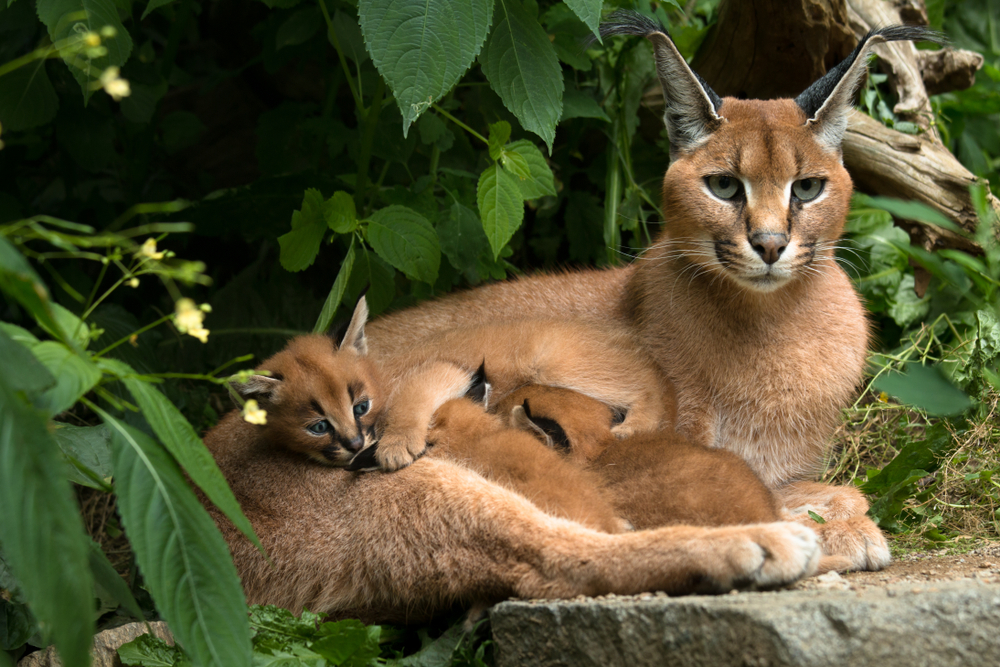
The caracal may not be as large as lions or leopards, but its speed and agility make it just as deadly in its environment. With long legs and tufted ears, it is built to stalk prey silently and strike with sudden power. Its ability to leap up to 12 feet into the air allows it to snatch birds mid-flight. For smaller animals, a caracal’s pounce is swift and merciless.
A Smithsonian Magazine feature highlights the caracal’s role as one of Africa’s most skilled small predators, capable of surviving in deserts, savannas, and forests. Their adaptability to both wild habitats and human-altered landscapes shows their resilience. Unlike other big cats, they often hunt during the day, making their ambushes even more surprising. Their hunting skills prove that size doesn’t determine lethality.
10. Clouded Leopard
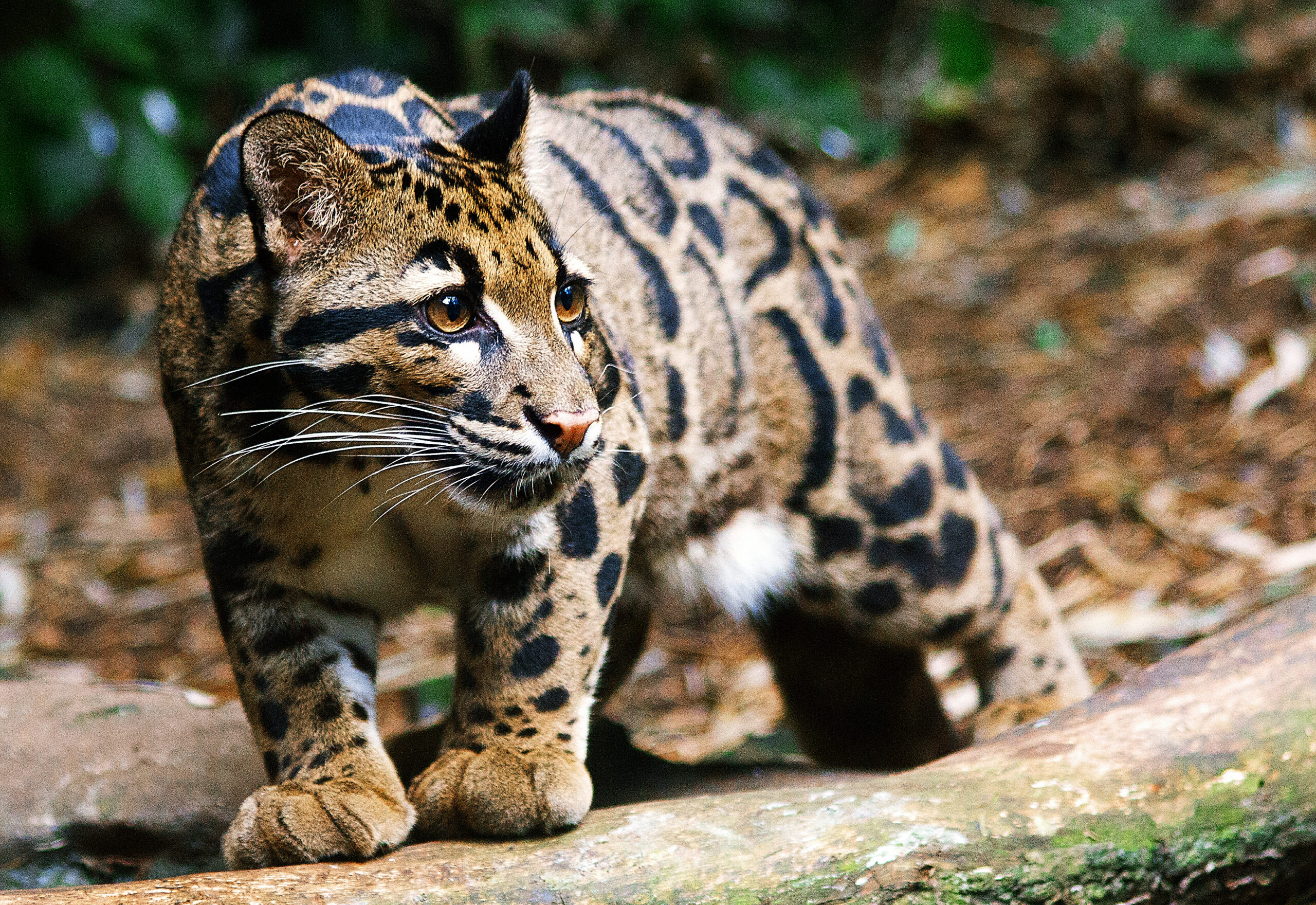
The clouded leopard is a mysterious cat of Southeast Asia, known for its unique coat and long canine teeth. Despite being smaller than other big cats, its bite is devastatingly effective. It is a master climber, often hunting from trees before pouncing on unsuspecting prey. With stealth and agility, it delivers fatal strikes before prey can react.
Clouded leopards are shy and rarely seen, but their reputation as skilled ambush hunters is well documented. Their ability to climb upside down on branches gives them a hunting advantage unlike any other cat. These predators rely on surprise more than speed, making their attacks near impossible to avoid. The clouded leopard proves that mystery and danger often go hand in hand.
11. Black Panther
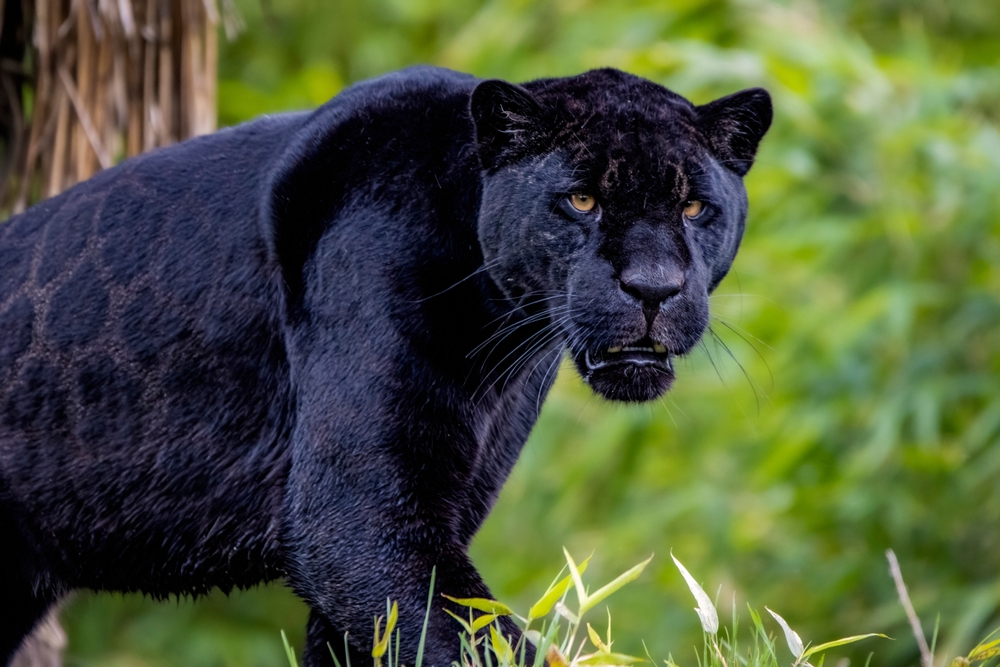
The black panther is not a separate species, but a melanistic variation of leopards or jaguars. Its dark coat gives it the ultimate advantage at night, allowing it to disappear into the shadows. This camouflage makes it nearly invisible until it strikes. A panther’s pounce is fast, powerful, and deadly.
According to National Geographic, melanism provides a survival advantage in dense forests where stealth is key. This allows black panthers to thrive in habitats where lighter coats might give them away. Their mysterious appearance has made them legendary across cultures, often symbolizing power and secrecy. In reality, their lethal ambush tactics are what cement their status as feared predators.
12. Asiatic Lion
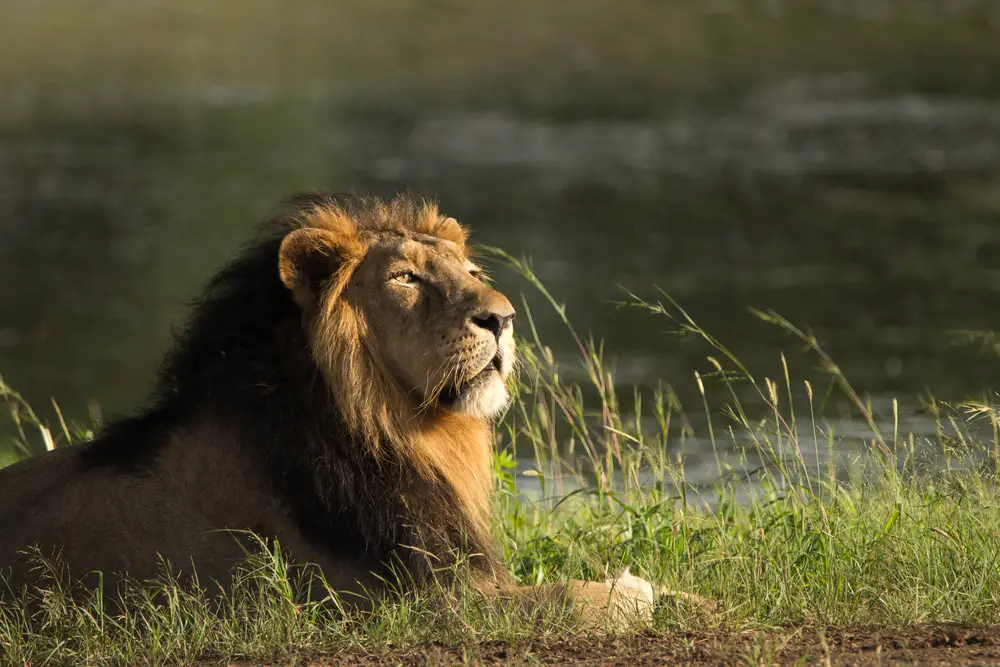 Asiatic Lion.[/caption]
Asiatic Lion.[/caption]
Smaller than the African lion, the Asiatic lion is still a powerful predator with sharp instincts. Found only in the Gir Forest of India, it has a more compact build but retains the strength and bite of its larger cousin. Hunting in groups, they can bring down prey like antelope and buffalo. Alone, a single Asiatic lion is still a formidable hunter capable of fatal precision.
These lions represent one of the most successful conservation stories in India, where their numbers have grown in recent decades. Living in close proximity to humans, they are symbols of strength and resilience. Their pounce may not be as dramatic as tigers, but their strategy and teamwork give them an edge. The Asiatic lion remains a reminder that even endangered predators can thrive with protection.
13. Fishing Cat
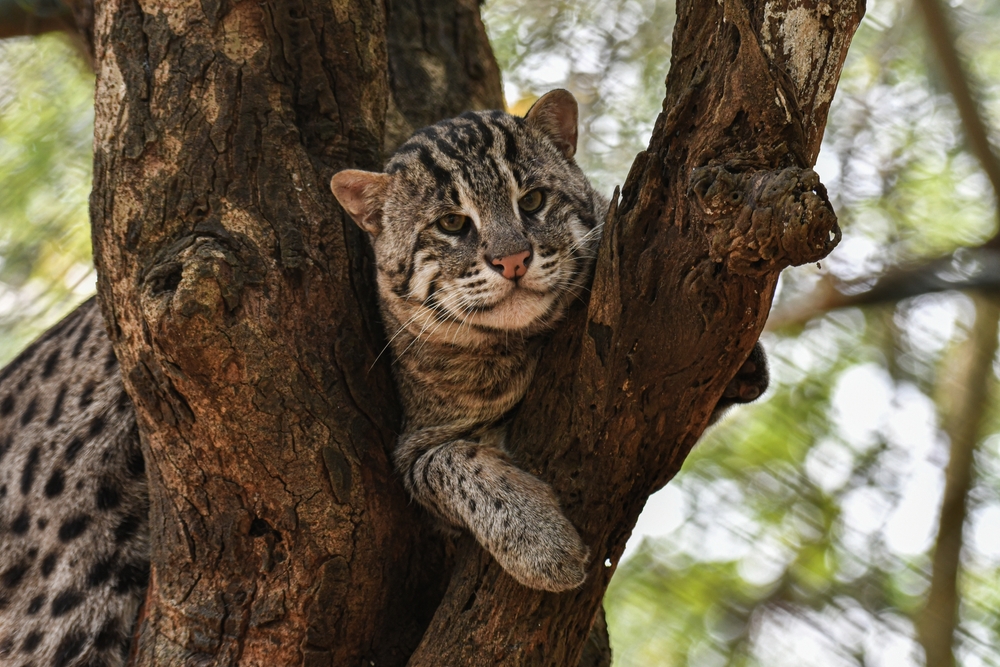
The fishing cat is a unique predator that thrives in wetlands across South and Southeast Asia. Its semi-webbed feet and strong build make it an expert swimmer. Unlike other cats, it is unafraid of water and will leap in to catch fish, frogs, and even small birds. Its pounce from the water’s edge is sudden, deadly, and efficient.
Fishing cats are an important part of their ecosystems, controlling aquatic animal populations. Sadly, habitat loss has made them vulnerable, though they remain elusive and adaptable hunters. Their combination of swimming skill and ambush style makes them stand out among wild cats. Each strike proves that danger can come from unexpected places—even the shoreline.
14. Serval
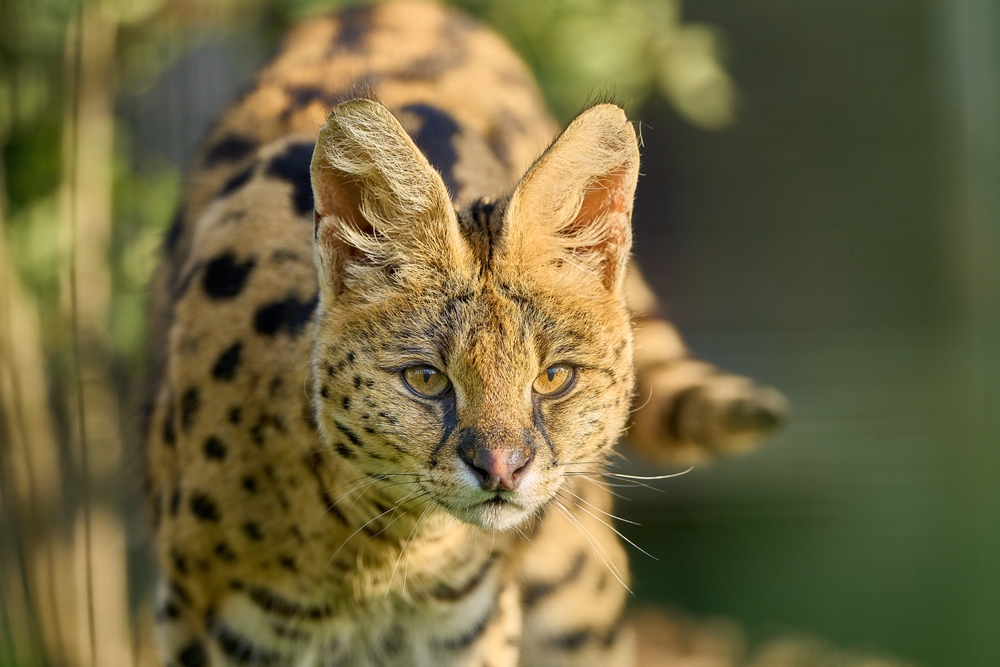
With its long legs and oversized ears, the serval looks almost otherworldly. These features aren’t just for show—they help it leap 10 feet into the air and pinpoint prey hiding in grass. Servals specialize in hunting rodents, birds, and reptiles with lightning-fast strikes. Despite being smaller than leopards or lions, they are perfectly adapted to their niche.
Servals are among the most successful hunters of all cats, with studies estimating kill rates as high as 50%. Their incredible accuracy when pouncing on hidden prey is unmatched. They rely on patience, stealth, and sudden bursts of energy to feed efficiently. Watching a serval hunt is a reminder that precision can be just as powerful as brute force.
15. Bengal Tiger
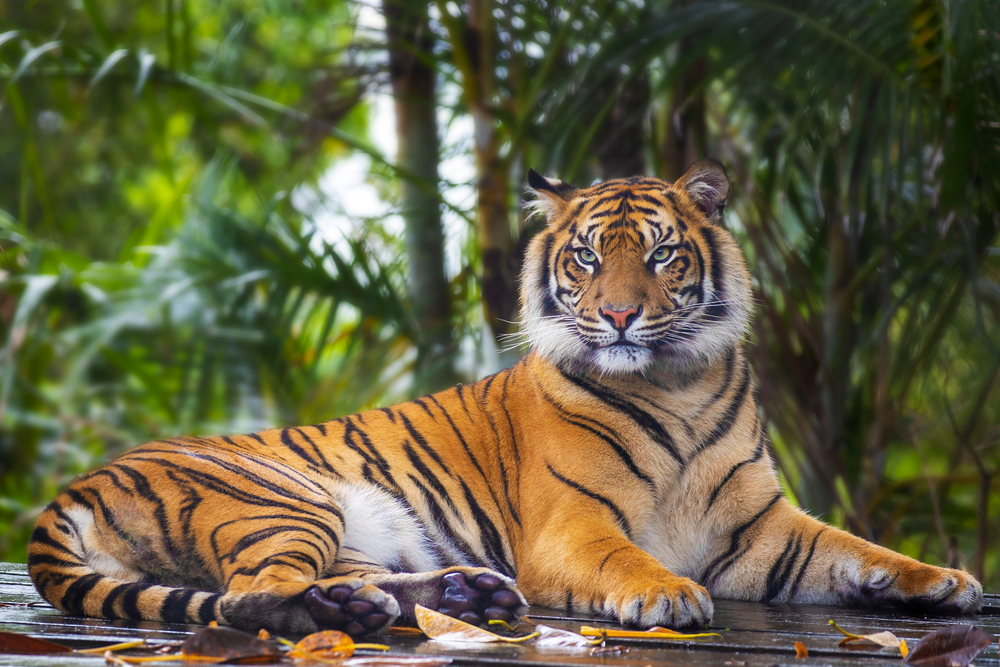
The Bengal tiger is not only mesmerizing to look at but is one of the most dangerous predators on Earth. Weighing up to 500 pounds, this tiger’s raw power and speed allow it to take down prey much larger than itself. Its sharp claws and crushing bite make it a formidable opponent in the wild. Found primarily in India and Bangladesh, it stands as both a cultural symbol and a living reminder of untamed power.
Research published by the Wildlife Conservation Society notes that Bengal tigers are responsible for more human-wildlife conflict deaths in India than any other species, underlining their lethal capabilities. Their ability to adapt to forests, mangroves, and grasslands makes them both versatile and unpredictable hunters. These tigers are often solitary, relying on stealth to ambush unsuspecting prey with devastating accuracy. Their dominance in their ecosystem cements their reputation as rulers of the jungle.
